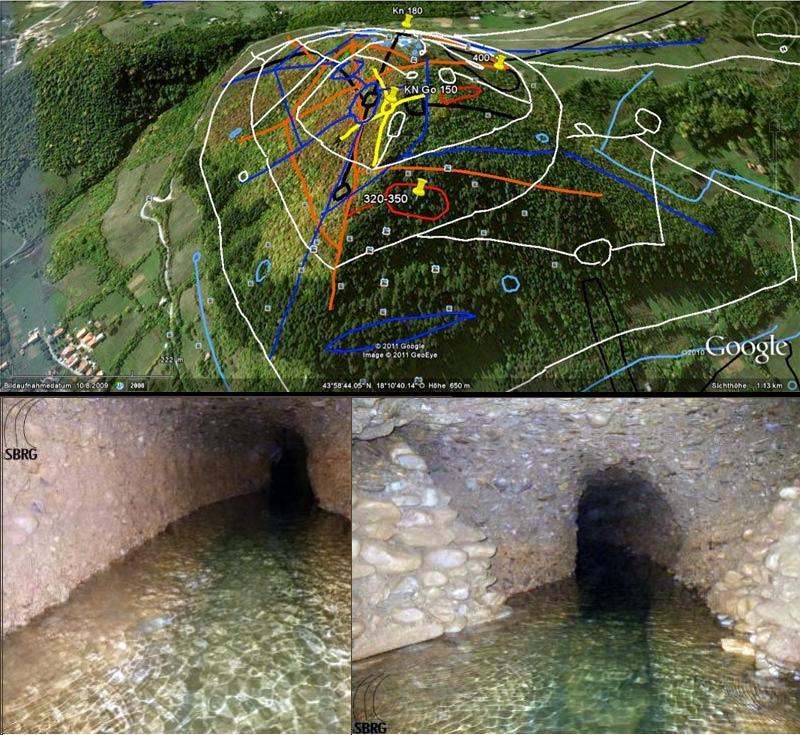2012 - Year of Revelations
Bosnian Pyramids
The Tunnels
Beneath the Bosnian Valley of the Pyramids there is an extensive underground tunnel and chamber network which runs for a total of more than ten miles, connecting all pyramids and other places together. From in the very beginning (on discovery of an entrance) it was found that all side tunnels were closed of by stone walls and filled up with river bed material. It took a lot of time and work to remove some of them and take the fill material out. Following a tunnel that lead to the Pyramid of the Sun, they stumbled upon two open tunnels with water in it. They also had side tunnels that were walled of. One led to the Pyramid of the Sun. The entire tunnel was clear, with stone walls at the sides, and fresh water upstream. As the ceiling dropped, they continued to explore with a flat boat until the height was too small. It looks like this was a channel from a water well which starts under the pyramid. See below for pictures.
A big breakthrough happened at the Second International Scientific Conference on Bosnian Pyramids held in September 2011 in Visoko, Bosnia-Herzegovina, where Klaus Dona presented a map of the underground tunnel system present in the Pyramid of the Sun. The map came from a a friend of his who works with sophisticated ground penetrating radar from satellites. It shows several levels (depth) of tunnels, probably connected to each other by vertical shafts, and couple of chambers.
Klaus Dona said that most of the chambers are empty, but one "contains bones, and something else that will surprise you when you find it".
The tunnels are color coded: light blue is 5 meters ( 15 feet) under the surface, white is 10 meters (30 feet) deep, blue is 40 meters ( 120 feet) deep, brown is 70 meters (210 feet) deep, yellow is 150 meters (450 feet) deep, black is 180 meters (540 feet) deep, red is 350 meters (1050 feet) deep. The circles are rooms or hollow spaces.
Independent researcher and executive director of Serbian Research center “Duh Rtnja” Saša Nađfeji has further analyzed Klaus Dona’s map


























